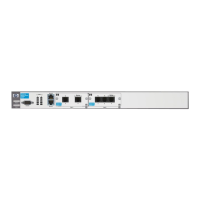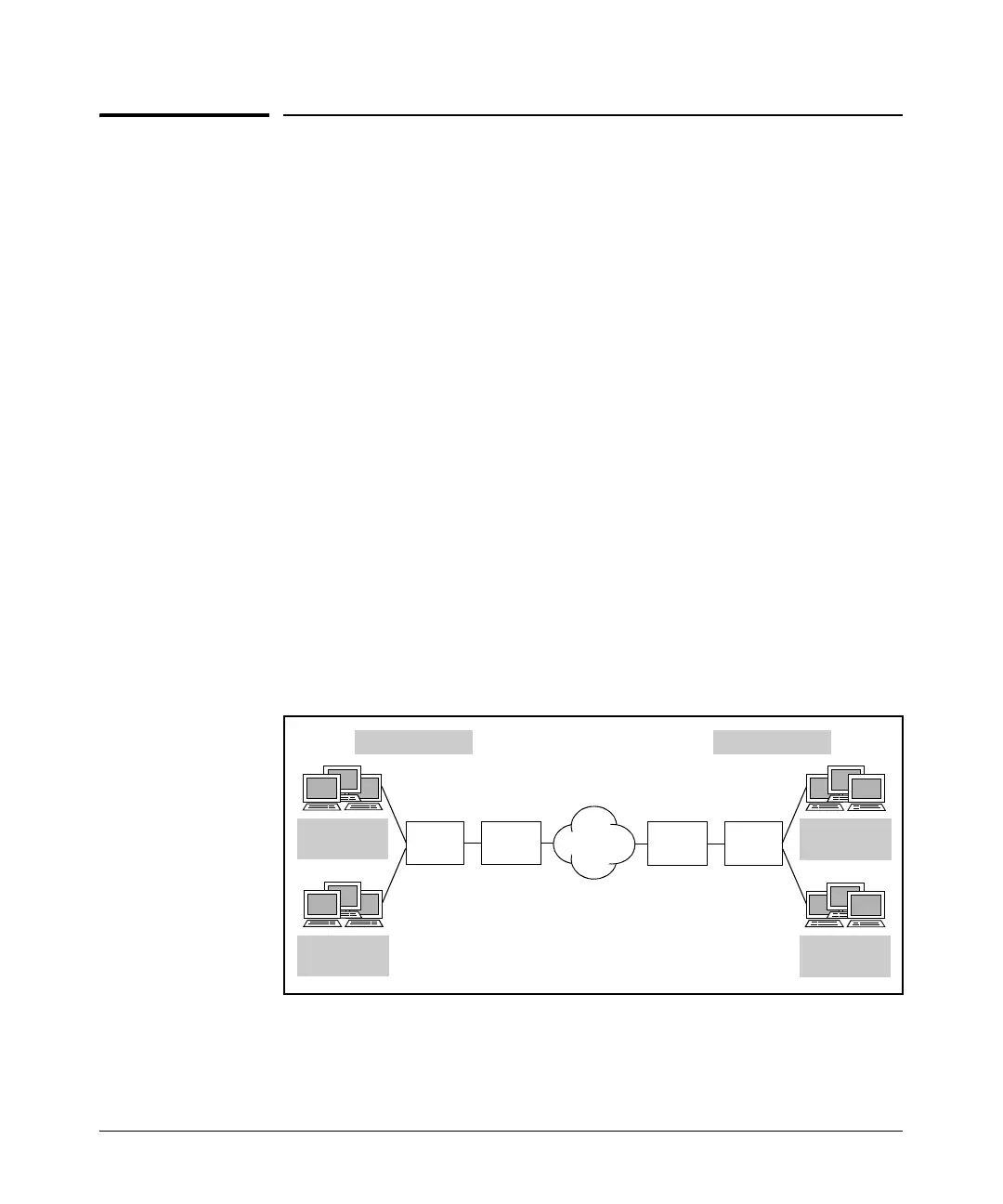10-3
Bridging—Transmitting Non-IP Traffic or Merging Two Networks
Overview
Overview
The ProCurve Secure Router can function as a bridge as well as a router. A
bridge, like a switch, is a Layer 2 device that operates at the Data Link Layer
of the Open Systems Interconnection (OSI) model. A bridge connects two or
more LAN segments together. Bridges and switches also minimize traffic on
network segments by breaking up traffic areas, reducing data transmission
delays, and increasing the efficiency of the network. A bridged network can
provide traffic management by reducing collisions and limiting the amount of
bandwidth wasted with unnecessary transmissions when routing is not
necessary.
Each device connected by a bridge must be on the same logical network
because Layer 2 devices translate and filter only hardware (MAC) addresses.
Bridges and switches make forwarding and filtering decisions based on these
MAC addresses; upper-Layer protocols—such as IP—are transparent to them.
Bridges can be categorized as either local or remote (see Figure 10-1). Local
bridges provide connectivity for multiple LAN segments in one area. A remote
bridge, on the other hand, connects LAN segments in different areas. Because
remote bridges must connect geographically distant LAN segments, they have
special design considerations, including the buffering of the LAN-to-WAN
connection speed variation.
Figure 10-1. Local and Remote Bridges
LAN
Segment 1
172.16.0.0/16 172.16.0.0/16
Local
bridge
LAN
Segment 2
Remote
bridge
LAN
Segment 3
Local
bridge
LAN
Segment 4
Remote
bridge

